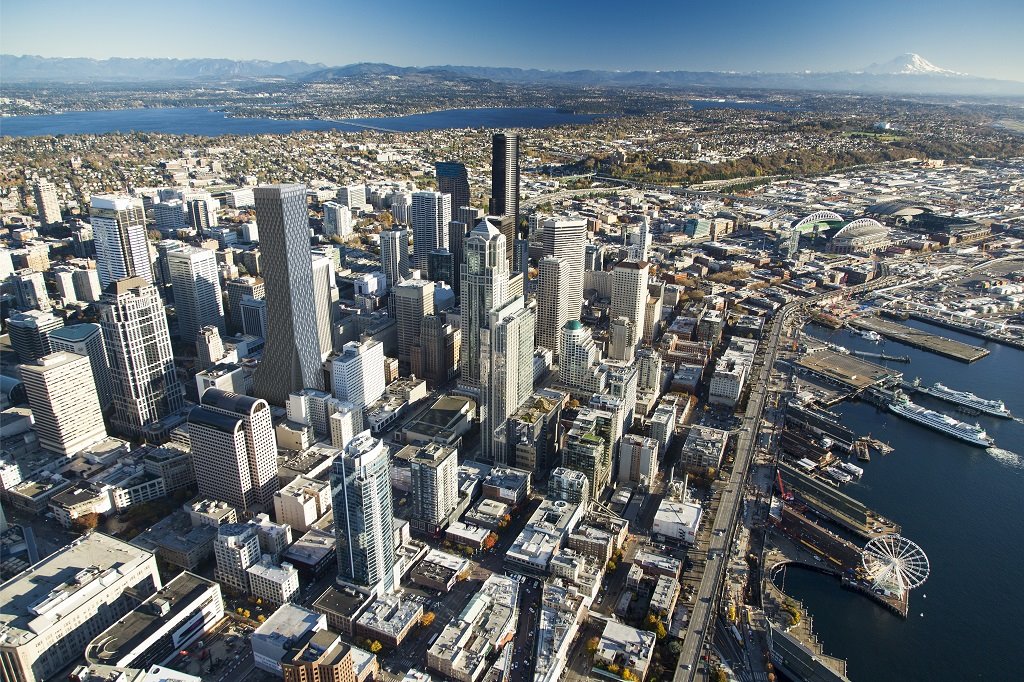![A view of the Seattle skyline as it will look in 2020 with the new tower (toward the left of the image) [Image: Rainier Square Tower project]](https://fabbaloo.com/wp-content/uploads/2020/05/Rainier-Square-Aerial-1-full-saturated-background__img_5eb09b47c2d06.jpg)
A recent use case of 3D printing in construction shows a nice use of technology in raising a skyscraper.
Much of the time, when we hear about 3D printing in construction it’s along the lines of “This House Was 3D Printed In Just 24 Hours!!” But that is misleading, as buildings made with walls of 3D printed concrete still require significant structural work before they are actually finished.
As with most major uses of any technology, smaller uses lead the way. Sometimes those smaller uses come in the form of support structures.
In 2020, Seattle’s skyline will be reshaped with the addition of the city’s second-tallest building, the 58-story Rainier Square Tower. It’s a thoroughly modern structure that looks something like an exponential curve on a graph. The design shows off architect Minoru Yamasaki’s vision of a geometric and iconic addition to the city, housing residential, office, fitness, and retail space to the tune of 1.7 million square feet in total covering about a city block.
![[Image: Rainier Square Tower project]](https://fabbaloo.com/wp-content/uploads/2020/05/Gallery_5__img_5eb09b4841a86.jpg)
“A building must be like a human being. It must have a wholeness about it, something that is very important,” said Yamasaki.
For a design so modern, of course a good deal of tech is going into the construction. Cladding specialist Walters & Wolf won the contract for the building’s exterior curtain wall. The curtain wall, a non-structural element that keeps the elements out and the look on point, is an important part of a building — and the slope of Rainier Square Tower doesn’t make that easy for Walters & Wolf.
![The stepped design makes for a challenging curtain wall design [Image: Rainier Square Tower project]](https://fabbaloo.com/wp-content/uploads/2020/05/Gallery_3__img_5eb09b488d283.jpg)
The base of the tower, which houses retail and office space, is wide and solid: fairly standard. Starting at the fourth floor, though, each floor angles back, evening into more regularity at the 40th floor. These angles make the cladding system unique for each story, with unique geometries that Walters & Wolf found worked with V-shaped aluminum nodes bringing together square-cut parts. The 140 nodes themselves have to be unique, sized from 18” x 7” x 10” up to 9” x 7” x 10”.
And mass customization is a strong fit for 3D printing.
Following some trial and error, and outsourcing node production to different teams that couldn’t find a right-fit approach, Walters & Wolf turned to 3Diligent. The company offered potential solutions in both investment casting and 3D printing to be checked out. Independent testing showed that both solutions worked, and 3D printing proved to be a better fit for the dimensional accuracy and structural reliability required.
![[Image: 3Diligent]](https://fabbaloo.com/wp-content/uploads/2020/05/WW-1-60__img_5eb09b49048fa.jpg)
The aluminum nodes in this example had to exhibit good adhesion with silicone, remaining water- and airtight. They are not carrying a massive structural load, but need to fit into the whole and do their job with no cracking or other failure.
Turning to 3D printing for a construction solution doesn’t necessarily mean constructing solely via 3D printing. Creating structurally necessary components to exact specifications is a strong argument for traditional and additive manufacturing coming together within a given project.






COBOD’s BOD2 construction 3D printer seems to be catching on as the company has made multiple sales of the new device.